A Socio-Environmental History of a Copper Mining Company: Rio-Tinto Company Limited (1874–1930)
Abstract
1. Introduction
2. Pollution, Health, and Ecosystems
2.1. Anti-Smokers and the Narrative on Pollution
2.2. A Harmonised Solution
2.3. The Role of Technology
2.4. The Scientific Controversy
3. The Biological Consequences of the Mining Activity
4. The Intervention of the Public Sector
5. Conclusions
Author Contributions
Funding
Acknowledgments
Conflicts of Interest
References and Notes
- Lynch, M. Mining in World History; Reaktion Books: London, UK, 2004. [Google Scholar]
- Coulson, M. The History of Mining. The Events, Technology and People Involved in the Industry That Forged the Modern World; Harriman House: Petersfield, Hampshire, UK, 2012. [Google Scholar]
- Hovis, L.; Mouat, J. Miners, Engineers, and the Transformation of Work in the Western Mining Industry, 1880–1930. Technol. Cult. 1996, 37, 429–456. [Google Scholar] [CrossRef]
- Schmitz, C. The World Copper Industry: Geology, Mining Techniques and Corporate Growth, 1870–1939. J. Eur. Econ. Hist. 2000, 29, 77–105. [Google Scholar]
- Historical Mining Statistics in: British Geological Survey. Available online: http://www.bgs.ac.uk/mineralsUK/statistics/worldStatistics.html (accessed on 20 April 2020).
- U.S. Geological Survey. Available online: http://minerals.usgs.gov/minerals/ (accessed on 20 April 2020).
- Estadísticas Mineras de España (1861–2014). Available online: http://info.igme.es/estminera/default.aspx (accessed on 20 April 2020).
- Pérez-Cebada, J.D. Tierra Devastada. Historia de la Contaminación Minera; Síntesis: Madrid, Spain, 2014; pp. 285–289. Available online: https://www.sintesis.com/data/indices/9788499588469.pdf (accessed on 29 May 2020).
- Pérez Macías, J.A.; Delgado Domínguez, A. (Eds.) Las Minas de Riotinto en Época Julio-Claudia; Servicio de Publicaciones de la Universidad de Huelva: Huelva, Spain, 2007. [Google Scholar]
- Avery, D. Not on Queen Victoria’s Birthday. Story of the Río Tinto Mines; Collins: London, UK, 1974. [Google Scholar]
- Harvey, C. The Río Tinto Company: An Economic History of a Leading Mining Concern: 1873–1954; Alison Hodge: Cornwall, UK, 1981. [Google Scholar]
- Arenas, C. Empresa, Mercados, Mina y Mineros: Rio Tinto, 1873–1936; Universidad de Huelva: Huelva, Spain, 1999. [Google Scholar]
- Gil Varón, L. Minería y Migraciones. Riotinto, 1873–1973; Sociedad Cooperativa Industrial Tipografía Católica: Córdoba, Spain, 1984. [Google Scholar]
- Domenech, J. Mineral resource abundance and regional growth in Spain, 1860–2000. J. Int. Dev. 2008, 20, 1122–1135. [Google Scholar] [CrossRef]
- Nadal, J. Andalucía. Paraíso de los Metales no Ferrosos. In Historia de Andalucía. VII. La Andalucía Liberal (1778–1868); Bernal, A.M., Ed.; Cupsa & Planeta: Barcelona, Spain, 1981; pp. 399–460. [Google Scholar]
- Metallgesellsch, A.G. Recueils Statistiques sur les Métaux Suivants: Plomb, Cuivre, Zinc, Étain, Argent, Nickel, Aluminium et Mercur; C. Adelmann: Frankfurt, Germany, 1904. [Google Scholar]
- Chastagnaret, G. L’Espagne, Puissance Minière dans l’Europe du XXE Siècle; Casa de Velázquez: Madrid, Spain, 2000. [Google Scholar]
- Ferrero Blanco, M.D. Capitalismo Minero y Resistencia Rural en el Suroeste Andaluz. Río Tinto, 1873–1900; Diputación Provincial: Huelva, Spain, 1994. [Google Scholar]
- Pérez-Cebada, J.D. Conflictividad social y contaminación atmosférica en la cuenca minera onubense. Demófilo. Revista Cultura Tradicional Andalucía 1999, 32, 67–81. [Google Scholar]
- Guimaraes, P. Conflitos ambientais nas minas portuguesas. In De Pé Sobre a Terra. Estudos Sobre a Indústria, o Trabalho e o Movimento Operário em Portugal; Monteiro, B., Dias, J., Eds.; Universidades do Porto: Porto, Portugal, 2013; pp. 135–177. [Google Scholar]
- Mokyr, J. The Lever of Riches: Technological Creativity and Economic Progress; Oxford University Press: Oxford, UK, 1990. [Google Scholar]
- Randall, A.J. The philosophy of luddism: The case of the West of England workers, 1790–1809. Technol. Cult. 1986, 27, 1–18. [Google Scholar] [CrossRef]
- Wilkinson, N.B. Poverty and Progress: An Ecological Perspective on Economic Development; Praeger: New York, NY, USA, 1973. [Google Scholar]
- Szasza, A. Ecopopulism: Toxic Waste and the Movement for Environmental Justice; University of Minnesota Press: Minneapolis, MN, USA, 1994. [Google Scholar]
- Broadbent, J. Environmental Politics in Japan: Networks of Power and Protest; Cambridge University Press: Cambridge, MA, USA, 1998. [Google Scholar]
- González, M.; Martínez, J. (Eds.) Naturaleza Transformada. Estudios de Historia Ambiental en España; Icaria: Barcelona, Spain, 2001. [Google Scholar]
- Hayes, G. Environmental Protest and the State in France; Palgrave MacMillan: New York, NY, USA, 2002. [Google Scholar]
- Avilés-Palacios, C. Innovaciones y mejoras tecnológicas en la explotación de las minas de Río Tinto (1873–1897). Boletín Geológico Minero 2008, 119, 331–342. [Google Scholar]
- Pérez-Cebada, J.D. Lluvia ácida y deforestación en la mina: El primer expediente de compensación por daños causados por efecto de la contaminación atmosférica (1847). In Naturaleza Transformada. Estudios de Historia Ambiental en España; González, M., Martínez, J., Eds.; Icaria: Barcelona, Spain, 2001; pp. 239–264. [Google Scholar]
- Preservativo del cólera-morbo. La Crónica Meridional, 20 July 1884; 1–2.
- Allum, J.R. Smoke across the Border: The Environmental Politics of the Trail Smelter Investigation. Ph.D. Thesis, Queen’s University, Kingston, ON, Canada, June 1996. [Google Scholar]
- Garrido, P.; Pérez, J.D. La primera campaña mediática sobre contaminación en España. In Conflictos Ambientais na Indústria Mineira e Metalúrgica: Passado e Presente; Guimaraes, P., Pérez, J.D., Eds.; CEICP-CETEM: Evora, Portugal; Rio de Janeiro, Brazil, 2016; pp. 269–290. [Google Scholar]
- Chastagnaret, G. Des Fumées et de Sang. Pollution Minière et Massacre de Masse. Andalousie, XIX Siècle; Casa de Velázquez: Madrid, Spain, 2017. [Google Scholar]
- Pérez-Cebada, J.D. Mining Corporations and Air Pollution Science before the Age of Ecology. Ecol. Econ. 2016, 123, 77–83. [Google Scholar] [CrossRef]
- Temper, L. Globalizing Environmental Justice: Transformative Movements. Past and Present. In The Routledge Handbook of Environmental Justice; Holifield, R., Chakraborty, J., Walker, G., Eds.; Taylor and Francis: London, UK, 2018; pp. 490–503. [Google Scholar]
- Smith, D.S. Mining America. In The Industry and the Environment, 1800–1980; University Press of Colorado: Niwot, CO, USA, 1993. [Google Scholar]
- La Época, January, 23th, 1880. Available online: http://www.bne.es/es/Catalogos/HemerotecaDigital/ (accessed on 20 April 2020).
- Parejo, J.M.; Rodríguez, G. Note upon the Question of Calcining of Copper Ore in the Province of Huelva Presented to the Spanish Government by the Río Tinto Company, Smelter Pamphlet, n. 1; Waterlow and Sons Limited: London, UK, 1888. [Google Scholar]
- Newell, E. Atmospheric Pollution and the British Copper Industry, 1690–1920. Technol. Cult. 1997, 38, 655–689. [Google Scholar] [CrossRef]
- Bloom, K.J. Murder of a Landscape: The California Farmer Smelter War, 1897–1916; University of Oklahoma Press: Norman, OK, USA, 2010. [Google Scholar]
- (R)io (T) into (C)ompany (A)rchive. “Reports from the Board” (1894). 100 A-1. Doc. 1. p. 35. At the same time, it requested and obtained from the Government the “Declaración de Utilidad Pública” (1879). This measure allowed the company to buy polluted properties close to the facilities in order to avoid compensations in this area. Similar strategies are employed by other mining corporations in Portugal ([20]) or in North America [31] with the objective to achieve a “smoke zone” or “industrial zone”
- Cabrillo, F. Industrialización y derechos de daños en la España del siglo XIX. Rev. Hist. Econ. 1994, 3, 591–609. [Google Scholar] [CrossRef]
- Cornejo, J. Los Humos de Huelva; Librería de Bernardo Rico: Madrid, Spain, 1892. [Google Scholar]
- Salkield, L.U. A Technical History of the Rio Tinto Mines: Some Notes on Explotation from Pre-Phoenician Times to the 1950’s; The Institution of Mining and Metallurgy: London, UK, 1987. [Google Scholar]
- Pérez-Cebada, J.D.; Guimaraes, P. Aguas da morte: La contaminación de las aguas en las cuencas mineras de la península ibérica. Rev. Hist. Ind. 2017, 69, 81–108. [Google Scholar]
- Exposiciones al Gobierno de S., M. Sobre los Daños Que Ocasionan a la Salud Pública y a la Agricultura los Humos de Calcinaciones de los Minerales Cobrizos; Imprenta de Mendoza: Huelva, Spain, 1878. [Google Scholar]
- Sociedad de propietarios y el Ayuntamiento de Calañas. Al Gobierno, A Las Autoridades, A La Prensa, A Los Representantes Del País Y A Los Municipios De La Provincia De Huelva; Imprenta de F. Bueno y J. Fernández: Huelva, Spain, 1886; pp. 23–40. [Google Scholar]
- Serrano, L. Letter. La Època, 14 February 1878; 4. [Google Scholar]
- Pulido, Á. Sobre las Calcinaciones de Huelva (Problema de Salubridad); Establecimiento Topográfico de Enrique Teodoro: Madrid, Spain, 1890. [Google Scholar]
- Guillem-Llobat, X. Medical Experts and Agnotology in the Fumes Controversy of the Huelva Copper Mines (1888–1890). Med. Hist. 2017, 61, 3–424. [Google Scholar] [CrossRef] [PubMed]
- Arenas, C. Padres y patrones. Poder y mercado en la cuenca minera de Riotinto, 1873–1936. In Río Tinto: Historia, Patrimonio Minero y Turismo Cultural; Pérez, J.A., Domínguez, A.D., Pérez López, J.M., García Delgado, F.J., Eds.; Universidad de Huelva: Huelva, Spain, 2011; pp. 231–242. [Google Scholar]
- Stiglitz, J.E.; Sen, A.; Fitoussi, J.P. Mismeasuring Our Lives; The New Press: New York, NY, USA, 2010. [Google Scholar]
- Martínez-Carrión, J.M. El nivel de vida en la minería española, 1840–1936. In Minería y Desarrollo Económico en España; Pérez de Perceval, M.Á., López-Morell, M.Á., Sánchez-Rodríguez, A., Eds.; Síntesis: Madrid, Spain, 2006; pp. 237–256. [Google Scholar]
- Steckel, R.; Floud, R. (Eds.) Health and Welfare during Industrialization; University of Chicago Press: Chicago, IL, USA, 1997. [Google Scholar]
- Komloss, J. Stature, Living Standard and Economic Development: Essays in Anthropometric History; Chicago University Press: Chicago, IL, USA, 1994. [Google Scholar]
- Floud, R.; Fogel, R.W.; Harris, B.; Hong, S.C. The Changing Body: Health, Nutrition, and Human Development in the Western World since 1700; Cambridge University Press: Cambridge, MA, USA, 2011. [Google Scholar]
- Eveleth, P.B.; Tanner, J.M. Worldwide Variation in Human Growth; Cambridge University Press: Cambridge, MA, USA, 1990. [Google Scholar]
- Tanner, J.M. Growth as a mirror of condition of society: Secular trends and class distinctions. In Human Growth, A Multidisciplinary Review; Demirjian, A., Ed.; Taylor and Francis: London, UK, 1986. [Google Scholar]
- Pérez de Perceval, M.ÁA.; Martínez-Carrión, J.M.; Martínez-Soto, ÁP. Biological Welfare and Inequality during the Mining Boom. Rio Tinto, 1832–1935. Rev. Hist. Ind. 2016, 64, 149–181. [Google Scholar]
- Preston, S. Mortality Patterns in National Populations: With Special Reference to Recorded Causes of Death; Academic Press: New York, NY, USA, 1976. [Google Scholar]
- Livi Bacci, M. Historia Mínima de la Población Mundial; Ariel Historia: Barcelona, Spain, 1990. [Google Scholar]
- Vögele, J.P. Urban Infant Mortality in Imperial Germany. Soc. Hist. Med. 1994, 7, 401–425. [Google Scholar] [CrossRef] [PubMed]
- Sen, A. Mortality as an Indicator of Economic Success and Failure. Econ. J. 1998, 108, 1–25. [Google Scholar] [CrossRef]
- Ramiro, D.; Sanz, A. Cambios estructurales en la mortalidad infantil y juvenil en España, 1860–1930. Boletín Asociación Demógrafos Españoles 1999, 17, 40–87. [Google Scholar]
- Link, B.G.; Phelan, J.C. Social Conditions as Fundamental Causes of Disease. J. Health Soc. Behav. 1995, 35, 80–94. [Google Scholar] [CrossRef]
- Link, B.G.; Phelan, J.C. Understanding sociodemographic differences in health—The role of fundamental social causes. Am. J. Public Health. Am. Public Health Assoc. 1996, 86, 471–473. [Google Scholar] [CrossRef]
- Link, B.G.; Phelan, J.C. McKeown and the Idea That Social Conditions Are Fundamental Causes of Disease. Am. J. Public Health. Am. Public Health Assoc. 2002, 92, 730–732. [Google Scholar] [CrossRef]
- Bengtsson, T.; Campbell, C.; Lee, J.Z. Life Under Pressure: Mortality and Living Standards in Europe and Asia, 1700–1900; Massachussets Institute of Technology Press: Cambridge, MA, USA, 2004. [Google Scholar]
- Pérez-Castroviejo, P.M. Niveles de bienestar de la población minera vizcaína: Factores que contribuyeron al descenso de la mortalidad, 1876–1936. Rev. Demogr. Hist. 2005, 23, 71–106. [Google Scholar]
- Dopico, F.; Losada, A. Cantidad y calidad de vida. El empleo de indicadores de mortalidad en la medición del bienestar. Rev. Demogr. Hist. 2007, 25, 167–191. [Google Scholar]
- Bengtsson, T.; Van Poppel, F. Socioeconomic inequalities in death from past to present: An introduction. Explor. Econ. Hist. 2011, 48, 343–356. [Google Scholar] [CrossRef]
- Rotberg, R.I.; Rabb, T.K. (Eds.) Hunger and History. The Impact of Changing Food Production and Consumption Patterns on Society; Cambridge University Press: Cambridge, MA, USA, 1985. [Google Scholar]
- Keusch, G. The History of Nutrition: Malnutrition, Infection and Immunity. J. Nutr. 2003, 133, 336–340. [Google Scholar] [CrossRef] [PubMed]
- Fogel, R.W. The Escape from Hunger and Premature Death, 1700–2100: Europe, America, and the Third World; Cambridge University Press: Cambridge, MA, USA, 2004. [Google Scholar]
- Pérez Moreda, V.; Reher, D.S.; Sanz Gimeno, A. La Conquista de la Salud. Mortalidad y Modernización en la España Contemporánea; Marcial Pons, Ediciones de Historia: Madrid, Spain, 2015. [Google Scholar]
- Paz Sánchez de, J.J. Entre el Puerto y la Mina; Publicaciones de la Universidad de Huelva: Huelva, Spain, 2014. [Google Scholar]
- Kearns, G. The urban penalty and the population history of England. In Society, Health and Population during the Demographic Transition; Brandström, A., Tederbrand, L.G., Eds.; Almqvist and Wiksell International: Stockholm, Sweden, 1988. [Google Scholar]
- Floud, R.; Watcher, K.; Gregory, A. Height, Health and History. Nutritional status in the United Kingdom, 1750–1980; Cambridge University Press: Cambridge, MA, USA, 1990. [Google Scholar]
- Harris, B.; Helgertz, J. Urban sanitation and the decline of mortality. Hist. Fam. 2019, 24, 207–226. [Google Scholar] [CrossRef]
- Ramos Gorostiza, J.L. Edwin Chadwick, el movimiento Británico de salud pública y el higienismo Español. Rev. Hist. Ind. 2014, 55, 11–38. [Google Scholar]
- Rosen, G. A History of Public Health; M.D. Publications: New York, NY, USA, 1958. [Google Scholar]
- Hamlin, C. Public Health and Social Justice in the Age of Chadwick; Cambridge University Press: Cambridge, MA, USA, 1998. [Google Scholar]
- Nathanson, C. The nineteenth century: From miasmas to microbes. In Disease Prevention and Social Change: The State, Society and Public Health in the United States, France, Great Britain and Canada; Nathanson, C., Ed.; Russell Sage Foundation: New York, NY, USA, 2007, 2007; Volume Chapter 2, pp. 23–46. [Google Scholar]
- Casselli, G. Health Transition and Cause-Specific Mortality. In The Decline of Mortality in Europe; Schofield, R., Reher, D., Bideau, A., Eds.; Clarendon Press: Oxford, UK, 1991; pp. 68–97. [Google Scholar]
- Cutler, D.; Grant, M. The role of Public Health Improvement in Health Advances: The Twentieth–Century United States. Demography 2005, 42, 1–22. [Google Scholar] [CrossRef]
- Rodriguez Ocaña, E.; Martínez Navarro, F. Salud Pública en España. De la Edad Media al Siglo XXI; Escuela Andaluza de Salud Pública. Consejería de Salud de la Junta de Andalucía: Sevilla, Spain, 2008. [Google Scholar]
- Maluquer, J. Consumo y precios. In Estadísticas Históricas de España. Siglos XIX y XX; Carreras, A., Tafunell, X., (Coord.); Fundación BBVA: Bilbao, Spain, 2005; pp. 1247–1296. [Google Scholar]
- García-Gómez, J.J.; Escudero, A. The standard of living of the workers in a Spanish industrial town: Wages, nutrition, life expectancy and height in Alcoy (1870–1930). Soc. Indic. Res. 2018, 140, 347–367. [Google Scholar] [CrossRef]
- García-Gómez, J.J. El nivel de vida de los trabajadores de Alcoy (1836–1936). Ph.D. Thesis, Universidad de Alicante, Alicante, Spain, September 2013. [Google Scholar]
- García-Gómez, J.J. El nivel de vida de los trabajadores de Alcoy: Salarios, nutrición y reforma sanitaria (1836–1913). Investig. Hist. Econ.–Econ. Hist. Res. 2015, 11, 164–173. [Google Scholar] [CrossRef]
- García-Gómez, J.J. Urban penalty en España: El caso de Alcoy (1857–1930). Hist. Ind. 2016, 63, 49–78. [Google Scholar]
- Martínez Alier, J. The Environmentalism of the Poor. A Study of Ecological Conflicts and Valuation; Edward Elgar: Cheltenham-Northampton, UK, 2002. [Google Scholar]
- Borrero, P.; Casto, J.J.; Villechenou, R.; Bautista, J.; Serrano, F. Las Calcinaciones en la Provincial de Huelva; Tipografía de Manuel G. Fernández: Madrid, Spain, 1887. [Google Scholar]
- Mackay, W.A. Huelva. Revista de Turismo; Imprenta Muñoz: Huelva, Spain, 1922. [Google Scholar]
- Sánchez-España, J. Acid Mine Drainage in the Iberian Pyrite Belt: An Overview with Special Emphasis on Generation Mechanisms, Aqueous Composition and Associated Mineral Phases. Macla 2008, 10, 34–43. [Google Scholar]
- Bech, J.; Bini, C.; Paskevich, M.A. (Eds.) Assessment, Restoration and Reclamation of Mining Influenced Soils; Academic Press: Amsterdam, The Netherlands, 2017. [Google Scholar]
- White, S.A. Climate changes and crisis in Ottoman Turkey and the Balkans, 1590–1710. In Proceedings of the International Conference on Climate Change in the Middle East: Past, Present and Future, Istanbul, Turkey, 20–23 November 2006. Available online: http://sci.martinkoechy.de/Climate_Change_and_the_Middle_East_2006_Proceedings/07_the_past_as_a_key_for_the_future.pdf (accessed on 21 April 2020).
- White, S. Rethinking Disease in Ottoman History. Int. J. Middle East Stud. 2010, 42, 549–567. [Google Scholar] [CrossRef]
- Leith, C.K. Conservation of Certain Mineral Resources. In The Foundations of National Prosperity. Studies on the Conservation of Permanent National Resources; Ely, R.T., Ed.; MacMillan Company: New York, NY, USA, 1918; pp. 187–274. [Google Scholar]
- LeCain, T. Mass Destruction. The Men and Giant Mines that Wired America and Scarred the Planet; Rutgers University Press: New Brunswick, NJ, USA; London, UK, 2009. [Google Scholar]
- Porter, M.E. The Competitive Advantage of Nations; Free Press: New York, NY, USA, 1990. [Google Scholar]
- Porter, M.E.; Van der Linde, C. Green and competitive: Ending the stalemate. Harv. Bus. Rev. 1995, 73, 120–137. [Google Scholar]
- Warhurst, A. Environmental Degradation from Mining and Mineral Processing: Corporate Policies and National Responses; Discussion Document, Mining and Environment Research Network; University of Sussex: Sussex, UK, 1991. [Google Scholar]
- Bridge, G. Contested Terrain: Mining and the Environment. Annu. Rev. Environ. Resour. 2004, 29, 205–259. [Google Scholar] [CrossRef]
- Pérez-Cebada, J.D. El derecho del trabajador al aire puro: Contaminación atmosférica, salud y empresas en las cuencas de minerales no ferrosos (1800–1945). Hist. Crít. 2020, 76, 27–43. [Google Scholar] [CrossRef]
- Wiertz, J. (Ed.) 2nd International Conference on Social Responsibility in Mining; Gecamin: Santiago de Chile, Chile, 2013. [Google Scholar]
- Hilson, G.; Murdock, B. Sustainable development in the mining industry: Clarifying the corporate perspective. Resour. Policy 2001, 26, 227–238. [Google Scholar] [CrossRef]
- Warhurst, A. Corporate Citizenship and Corporate Social Investment. Drivers of Tri-Sector Partnerships. J. Corp. Citizsh. 2001, 1, 57–73. [Google Scholar]
- Kopelus, P. Mining, Corporate Social Responsibility and the “Community”: The Case of Rio Tinto, Richards Bay Minerals and the Mbonambi. J. Bus. Ethic. 2002, 39, 275–296. [Google Scholar] [CrossRef]
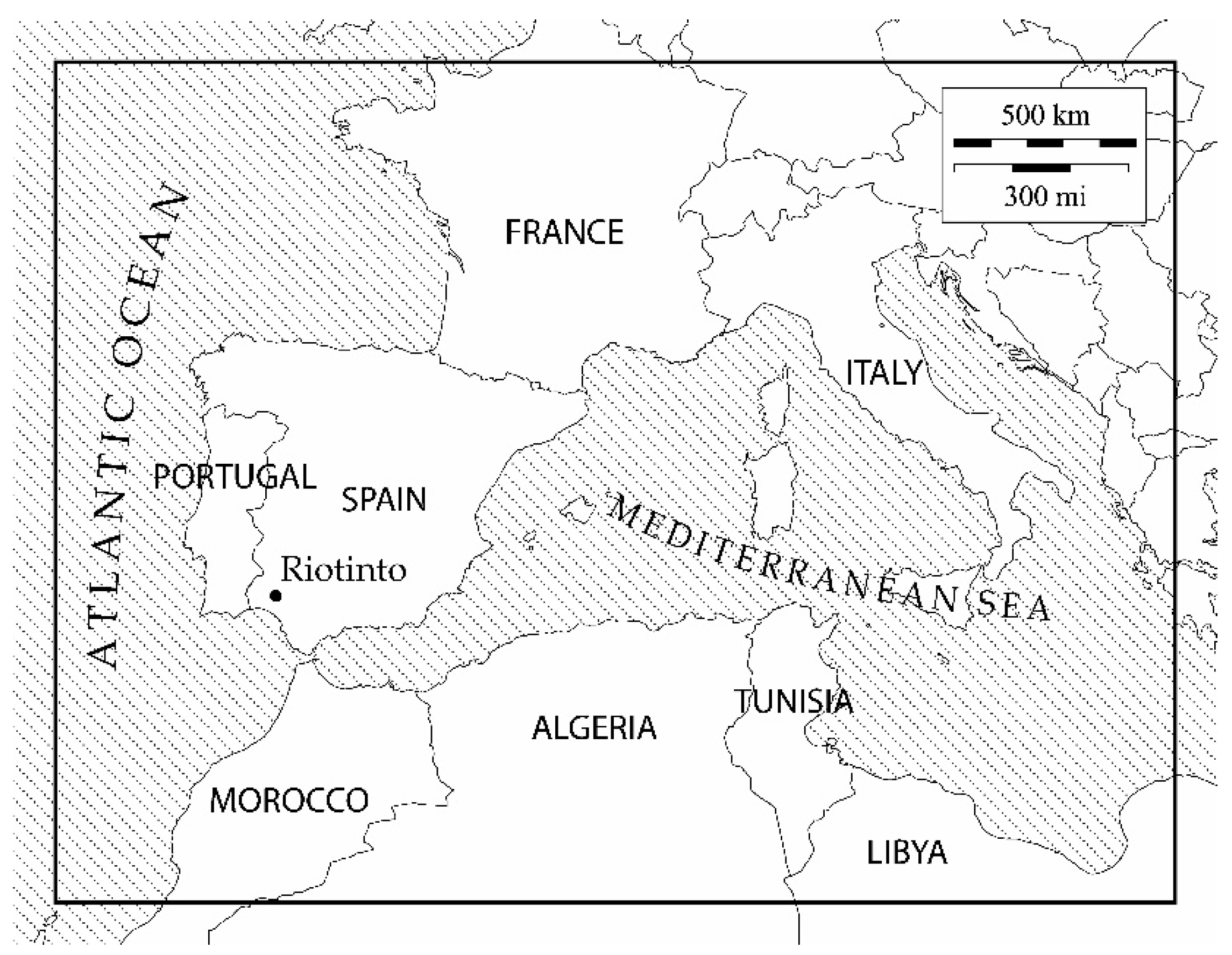
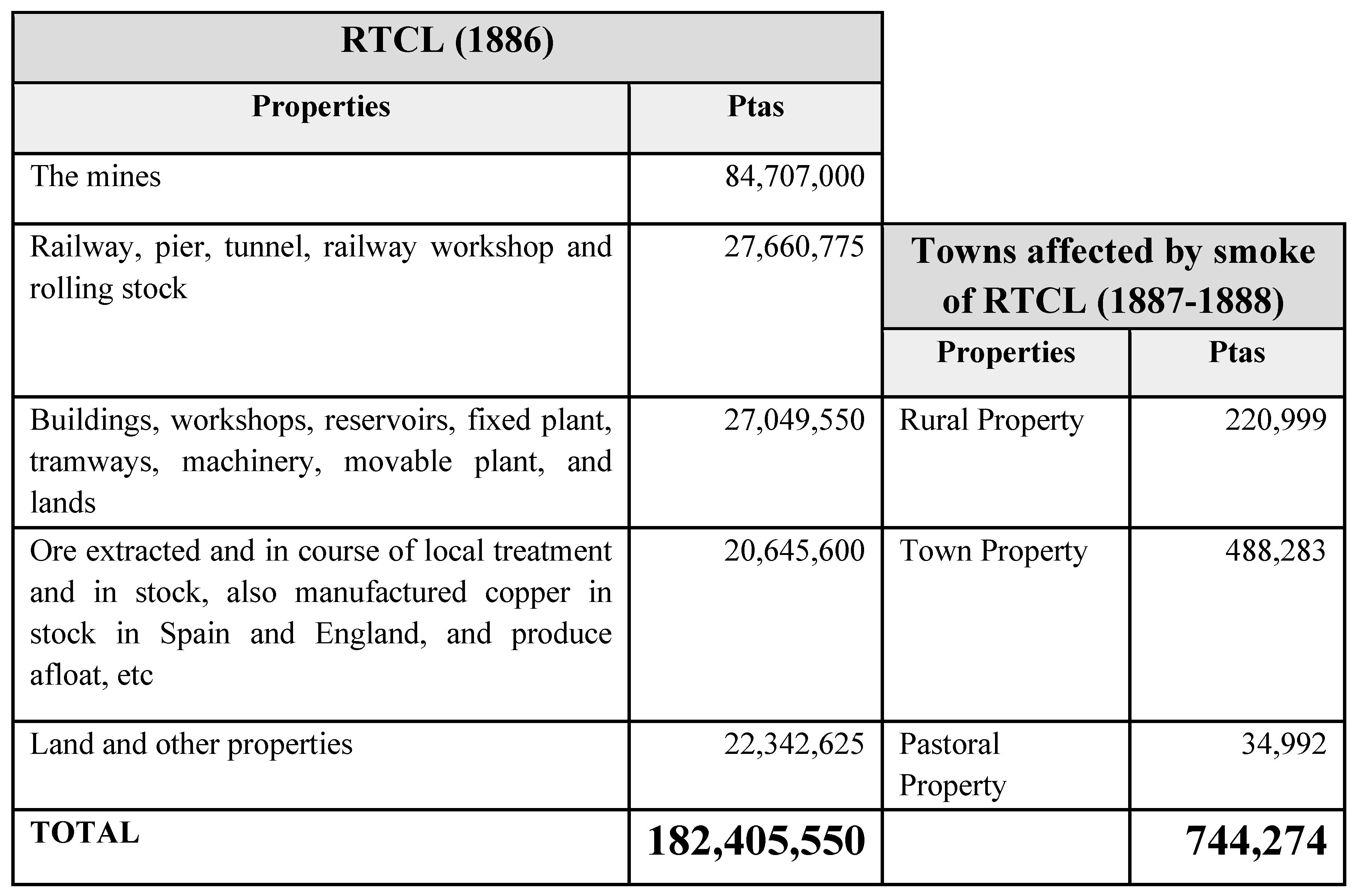

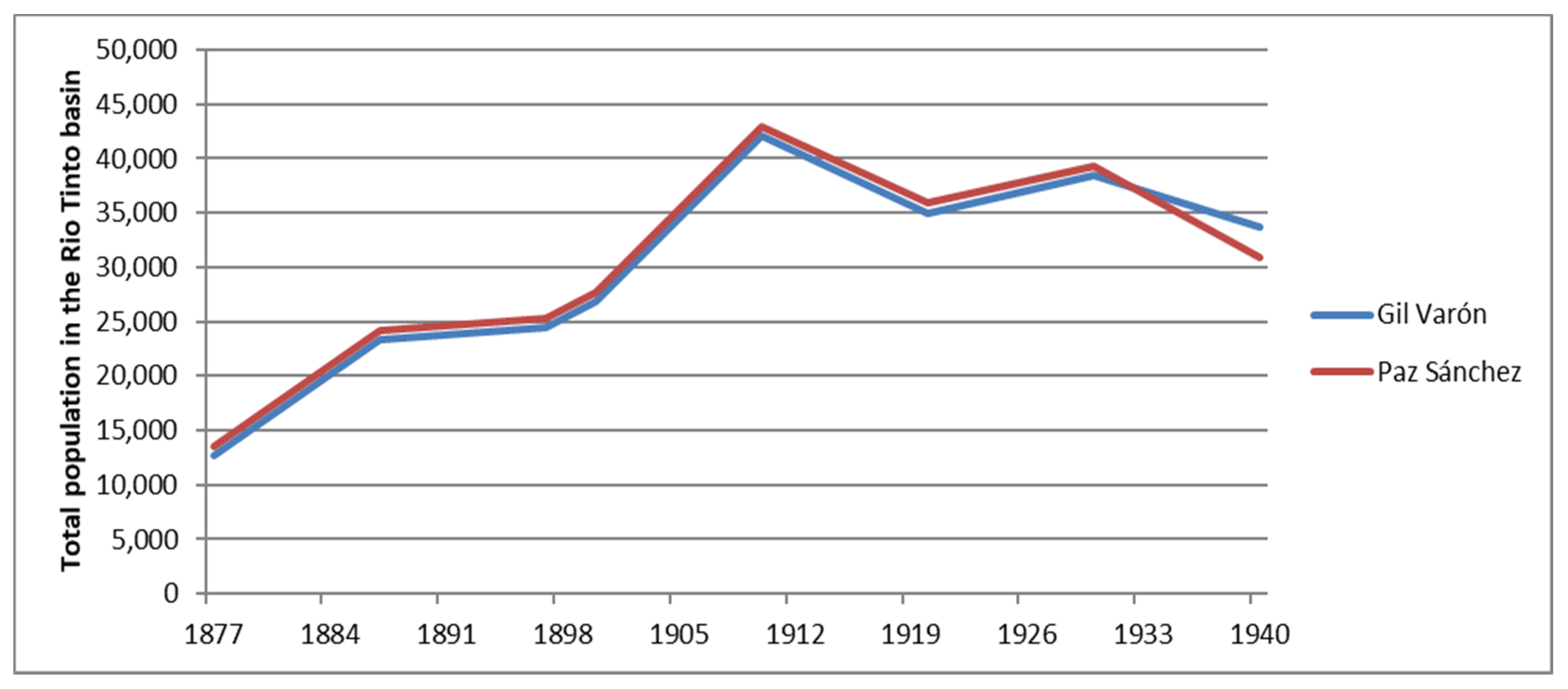

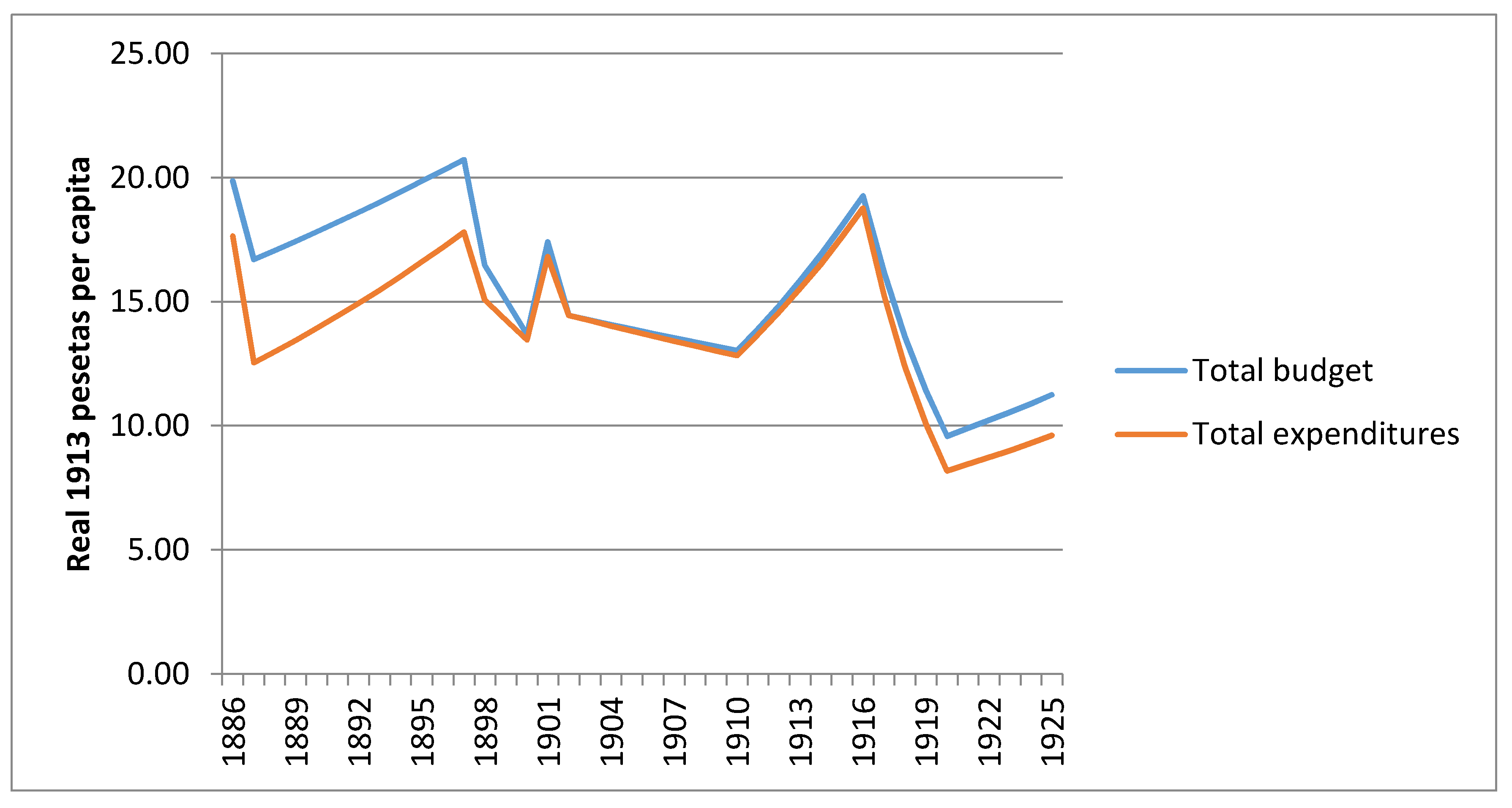
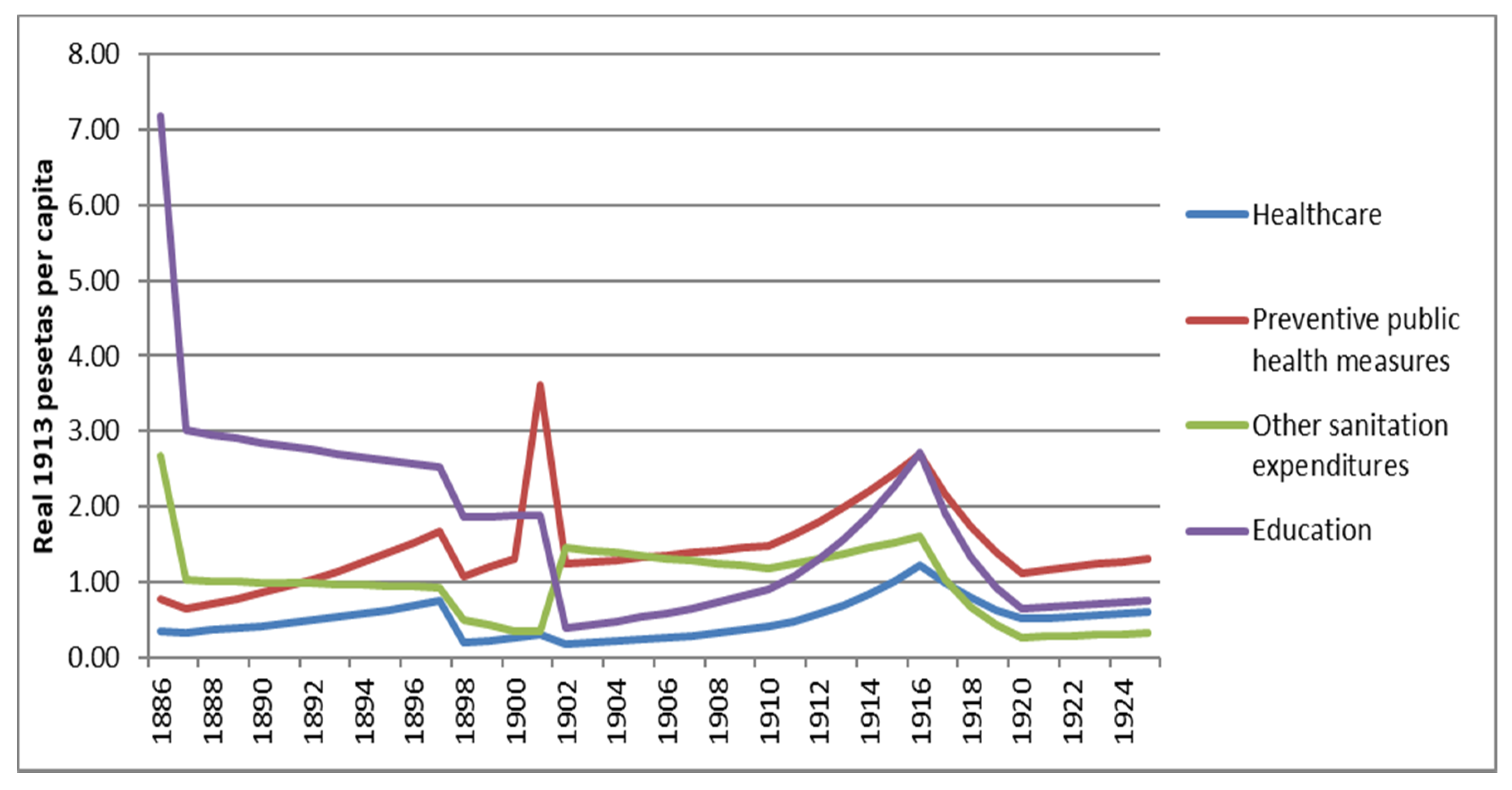
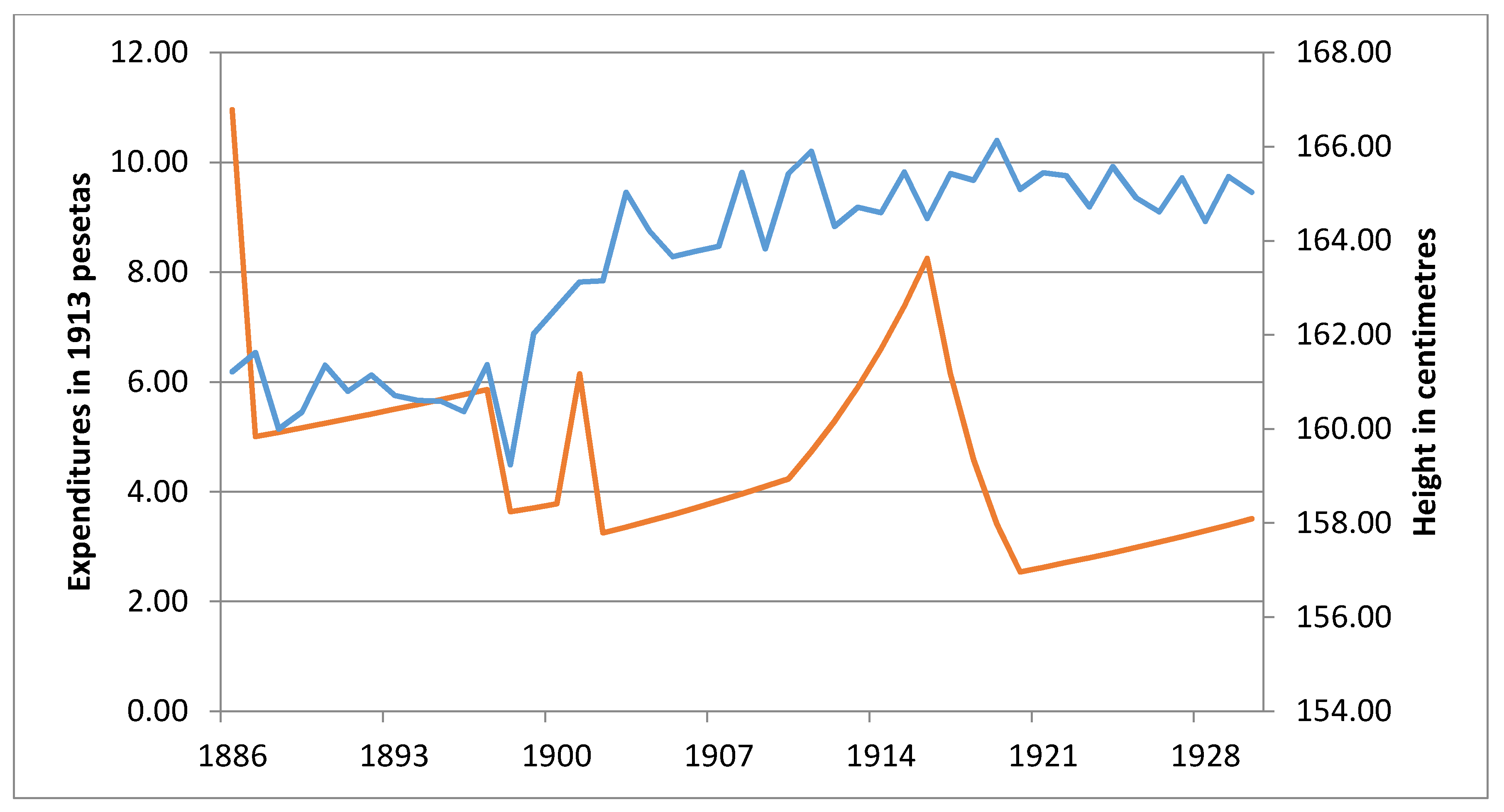
© 2020 by the authors. Licensee MDPI, Basel, Switzerland. This article is an open access article distributed under the terms and conditions of the Creative Commons Attribution (CC BY) license (http://creativecommons.org/licenses/by/4.0/).
Share and Cite
García-Gómez, J.J.; Pérez-Cebada, J.D. A Socio-Environmental History of a Copper Mining Company: Rio-Tinto Company Limited (1874–1930). Sustainability 2020, 12, 4521. https://doi.org/10.3390/su12114521
García-Gómez JJ, Pérez-Cebada JD. A Socio-Environmental History of a Copper Mining Company: Rio-Tinto Company Limited (1874–1930). Sustainability. 2020; 12(11):4521. https://doi.org/10.3390/su12114521
Chicago/Turabian StyleGarcía-Gómez, José Joaquín, and Juan Diego Pérez-Cebada. 2020. "A Socio-Environmental History of a Copper Mining Company: Rio-Tinto Company Limited (1874–1930)" Sustainability 12, no. 11: 4521. https://doi.org/10.3390/su12114521
APA StyleGarcía-Gómez, J. J., & Pérez-Cebada, J. D. (2020). A Socio-Environmental History of a Copper Mining Company: Rio-Tinto Company Limited (1874–1930). Sustainability, 12(11), 4521. https://doi.org/10.3390/su12114521




